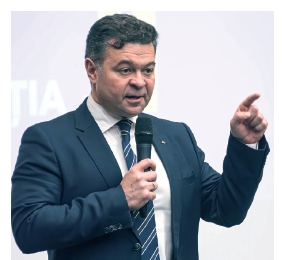The Romanian research system, connected to European reforms

We are taking action in two ways.
Most importantly, what is needed is a comprehensive appraisal of the various components of the system, in order to determine the areas with a potential for development at an international level. Currently, the national research system is exceedingly fragmented, into universities, institutes in the coordination of the various ministries and of the NASR, plus those under the coordination of the two Academies: the Romanian Academy, and the Academy of Agricultural and Forest Sciences. This fragmentation is at the origin of the incoherent allocation of public funds. We are tackling it by introducing a single, unique instrument of institutional evaluation and classification, at a national level. The Government Ordinance 57/2002, modified, introduces the procedure of institutional evaluation by teams of minimum 50% foreign experts. This evaluation will condition the access to any institutional support from the state budget. In this way we will ensure that public funds will be channeled to the best performers, while at the same time obtaining a massive reduction in the corresponding bureaucratic load (cf. 2 below).
2.Debureaucratize and decentralize
There are two main obstacles preventing the growth and success of excellent researchers: first, the problem of human resources, attracted abroad or to the private sector by better salaries, and the problem of the research environment, too often hostile to performance, and suffocated by a heavy and aggressive bureaucracy.
Numerous legal and procedural modifications have been introduced or are about to be introduced in order to reduce the bureaucratic problem. A first example is the elimination of the attestation process, which was an unnecessary barrier, with no equivalent in the EU. But the most important action, in this direction, is the merging of the three existing research agencies into a single one, the UEFISCDI, in order to create a coherent, uniform and efficient interface to the research community. Similar measures have recently been introduced in France and in Poland, and are recommended by the INNOVA report. In the future, the forms, reports and accounting will be more uniform, simpler and more rapid, and the number of bureaucratic authorizations and approvals smaller. The creation of a single agency to manage research programs consolidates also the NASR's capacity to obtain the relevant information for elaborating strategies, and its capacity to react rapidly and coherently to the various changes that appear in the academic and industrial environments. UEFISCDI thus becomes the main instrument through which the NASR will implement a demand driven research policy.
3.International openness
In line with the broader European trend, good practices in research evaluation involve the use of foreign researchers. Few are the countries large enough that internal evaluation may be impartial, objective and free of conflicts of interest. 30% of evaluators used by the French program management agency are foreign. Poland has also recently introduced foreign evaluators for its programs, while in Romania the recent legal modifications introduce the obligation of using minimum 50% foreign evaluators for each research project evaluated, including doctoral grants, as well as institutional evaluations.
All calls will be open for candidates from abroad who wish to work in Romanian institutions. Thus is removed a major bureaucratic obstacle in the way of the reintegration of Romanian researchers from the diaspora.
As concerns the European funds, these are designed to stimulate the internationalization of the academic communities in the member countries. However, the rate of absorption of these funds by the Romanian research community has been very low due to the complexity of these research programs, and the strong competition. Consequently, the NASR will support the strong development of bilateral agreements and programs with other nations, especially those with advanced economies. This will create the possibility of simpler, more accessible research arrangements for stimulating international cooperation.

Parerea ta conteaza: 
































 UVT, catalizator al mișcării academice timișorene, își urmează calea spre cunoașterea aprofundată și trecerea către tehnologiile viitorului și ale noilor generațiiUniversitatea de Vest din Timișoara este astăzi cea mai dinamică instituție de învățământ superior din România, o universitate care se...
UVT, catalizator al mișcării academice timișorene, își urmează calea spre cunoașterea aprofundată și trecerea către tehnologiile viitorului și ale noilor generațiiUniversitatea de Vest din Timișoara este astăzi cea mai dinamică instituție de învățământ superior din România, o universitate care se...










